
Third and last part, today we are going to see in depth the anatomy of the birds and in addition to learning a lot, it made me very curious to read about the differences of the species and I also learned other curiosities that you can read below. Let's start!
Birds
The author begins by clarifying that this will be a more general learning taking into account the wide diversity of the different species of birds.
The scientific thought that birds are descendants of dinosaurs is very significant. Vilppu tells us that when he visits the footprints of the dinosaurs in Arizona, he can not help but think of the similarity with the footprint of the chicken.
The main difference in the drawing of the birds in comparison with the animals that we previously saw, he points out, is that most of the "structure" in the birds is hidden by the plumage, and that allows us to rely more on the construction by means of the use of spherical shapes than species with more defined anatomies.
The bird is very compact with a central mass and the rest of the elements coming out of this form, to maintain the balance.
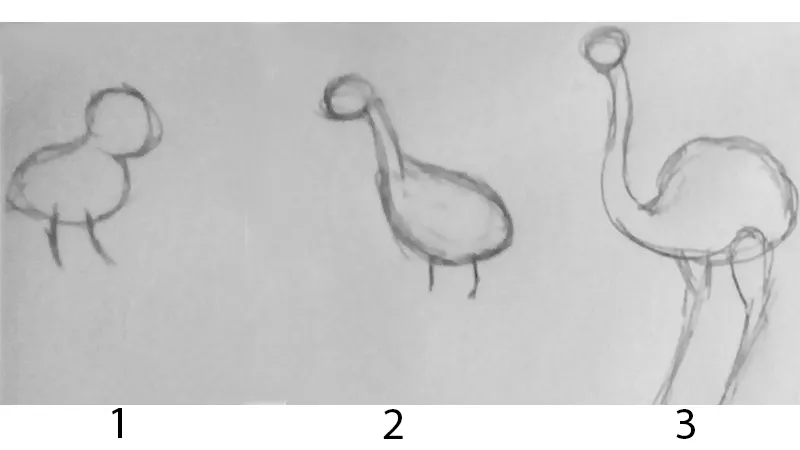
The main difference in these basic structures is given by the adjustments in the proportions, the length of the neck and the legs are the most important ways when establishing the different types of birds.
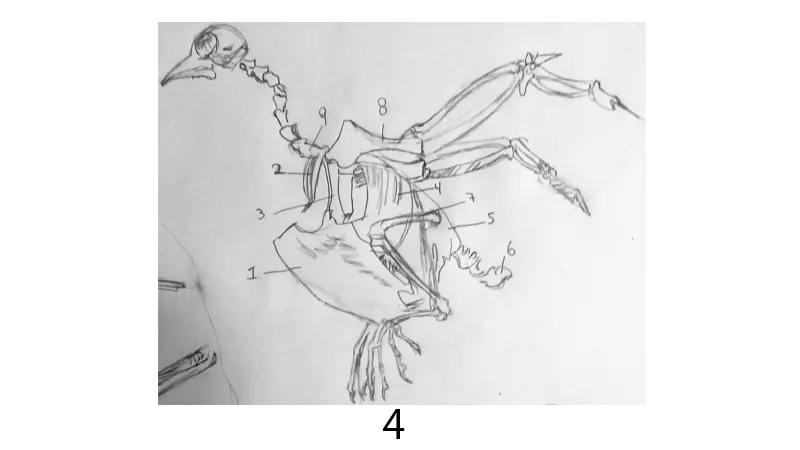
It is the basic structure of the torso. The important points for the artist should be the keel (the chest bone) which in turn joins the muscles of the wings, the pelvis and the wishbone (the clavicle of the birds).
- Keel 2) Wishbone 3) Coracoid bone 4) Rib Cage 5) Pelvis 6) Pygostyle 7) Femur 8) Humerus 9) Backbone

(5) The generic structure of the wings. Illustration. (6) With feathers.

There are a great variety of beaks (7) and feet (8), as much or more as wings.
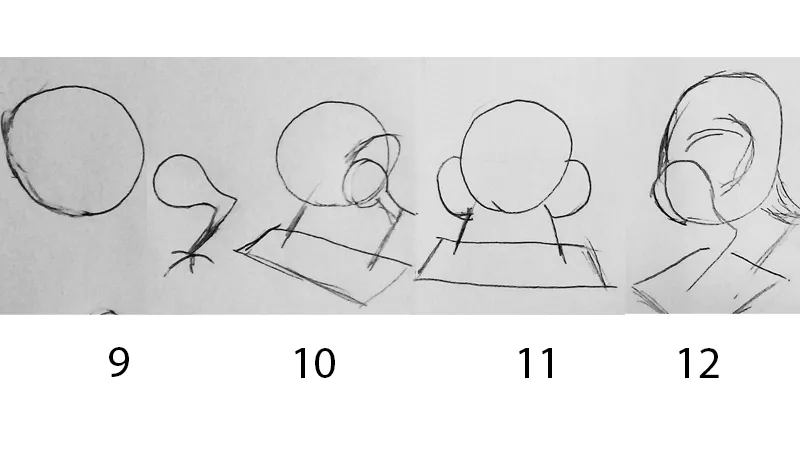
We begin the process of going from the general to the detailed. Start with a circle (9) representing the pelvic region. We place the legs in perspective to give direction (10). Then we add more volume to represent the upper part of the torso and load it with more direction and expression (12).

We slowly add more elements (13). The important thing is not to lose the action or the basic form. We add the head following the lines of action and at the other end, the tail (14).
Let's place the wings (15), as we continue with the concept of drawing the basic structure, we'll represent them as large masses in a simple way, using feathers at the tips to define the edges (16).
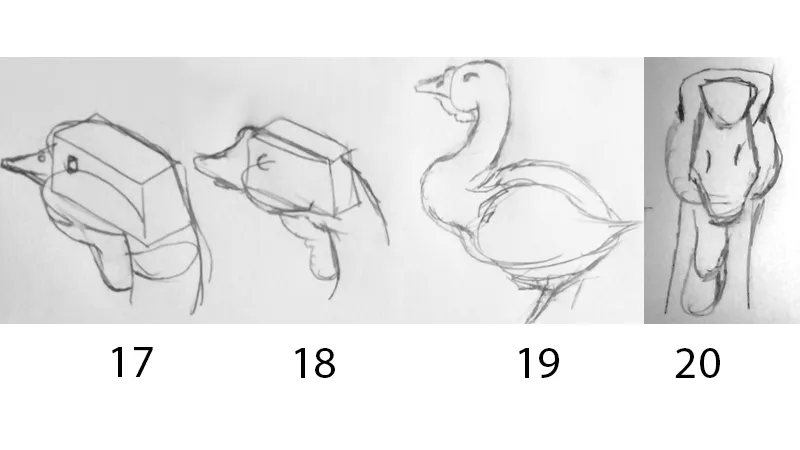
Now we begin to define the character and the unique aspect of each species of bird.
In the case of goose (17), you can follow a similar process but having the shape of its head in mind, instead of a sphere take as a base a box.

Parrots (21) Owls (22)
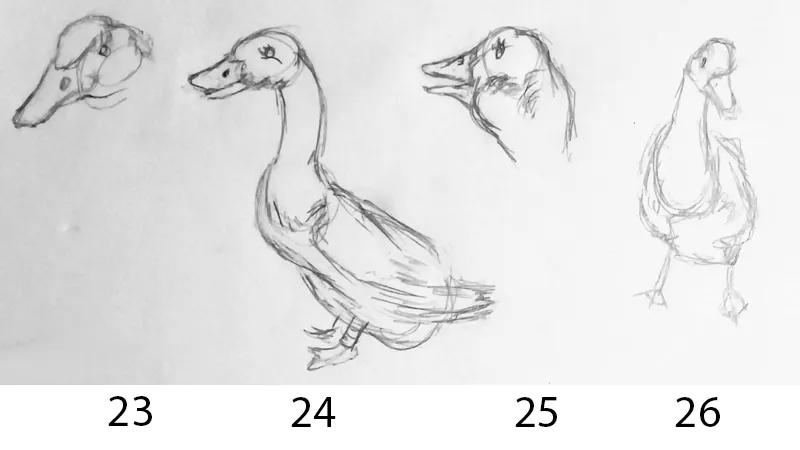
Ducks, the main difference with geese is that the latter are larger and have longer necks. As a sidenote, there are biological details, for example, the duck walks better while the goose is better at swimming.

Rodents (27) and Elephants (28). I think everyone is familiar with the myth that elephants fear mice, something triggers in them that generates repulsion and when they see them they move away from the place (this video serves as an example ). When reading a little about the subject, everything seems to indicate that it is really the surprise that scares the elephant, since by not characterizing itself by having good vision, seeing in a moment someone passing right in front of them, whoever it is, it scares them.

Kangaroos, we go from the general to the detailed.
And so this series comes to the end, I realized how fascinating the study of biology really is, perhaps in another life I studied some of that. Practicing so much inspired me several illustrations and while I'm doing them I'm going to share them, I hope you like them.
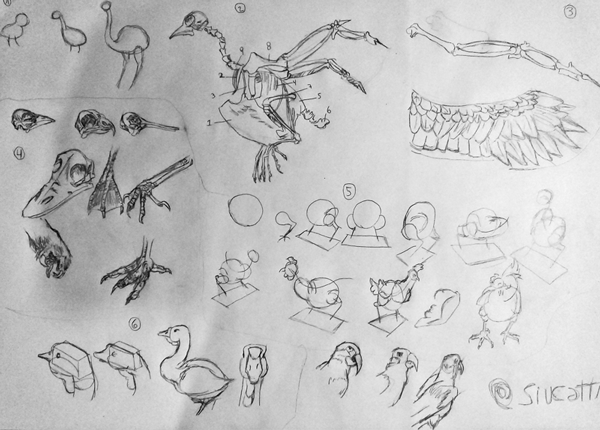
See you in the next series!
